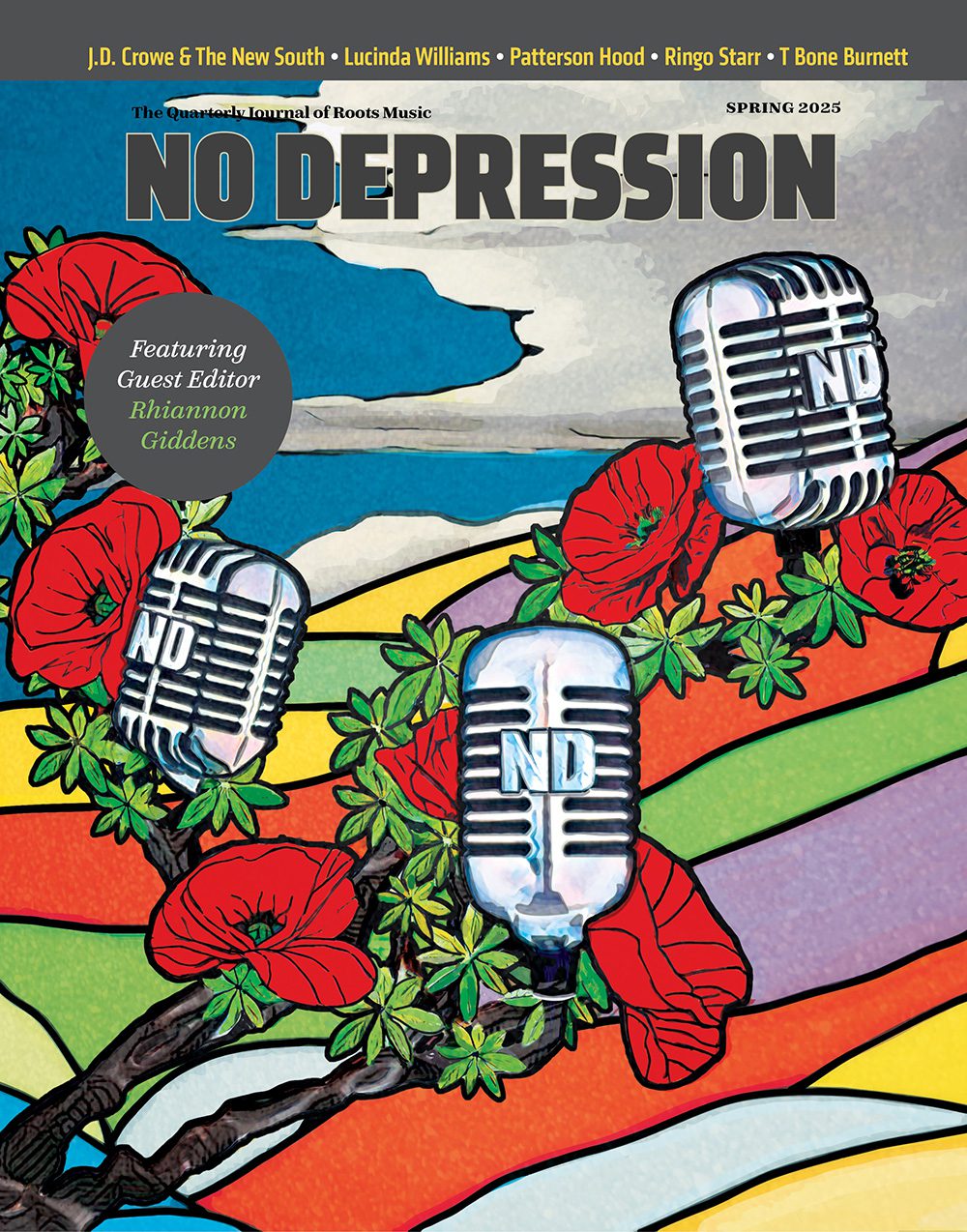Los Super Seven – Border radio
It came crackling through the radio speaker late at night from faraway places like Villa Acuna, Coahuila, “in sunny old Mexico.” The blowtorch signal faded in and out of the ether, making disjointed the voices of personalities too outrageous to be doubted, speaking to true believers and the wanton alike, promising salvation through God and/or low-down dirty-leg women celebrated in song.
Evangelists like Reverend Ike and Brother Al spread the gospel while selling Bibles, genuine holy water, and autographed pictures of Jesus Christ. Hucksters and quacks such as Doc Brinkley promised to restore men’s sexual vitality with goat gland implants. And most significantly, hepsters such as Wolfman Jack exposed listeners all across North America to the wilder side by spinning records other radio stations wouldn’t play and howling eerily before, after, and over the music, while advertising baby chicks, miracle balm, and collections of hit records.
It made the cute little Japanese transistor AM radio sound forbidden and menacing. To any impressionable kid hooked on music, it was better than magic.
Delbert McClinton remembers hearing it after he traded his coveted World War II German dress dagger for a little $2 crystal radio set. “I’d get in bed at night and crawl under the covers with my flashlight and hear stuff you couldn’t hear anywhere else, from Bill Monroe to B.B. King,” he says.
Lloyd Maines compares it to watching a dirty movie. Joe Ely says hearing it after midnight, sitting in a car parked in the middle of a cotton field with friends, drinking and who knows what, felt good “because it sounded like you were doing something wrong, really evil.”
Ruben Ramos tuned it in all the way to Michigan whenever his family left Texas and headed north to harvest crops in the fields. His older brothers preferred the Spanish-language stations beaming in from the interior of Mexico because that was the language and the music they’d grown up with. Ruben and his younger brothers were all the about the English-language rock ‘n’ roll and rhythm & blues served up on stations like XERF and XEG.
Freddy Fender was hooked on Dr. Jazzmo, a black disc jockey who spun Clifton Chenier and other regional delights, and another madman who called himself Howlin’ Rooster — characters even crazier than the better-known DJ who went by the name of Wolfman Jack. Joe Ely credits Wolfman Jack for turning him on to Jimmy Reed and Muddy Waters, and Brother Al, the guy who followed the Wolfman every evening, for exposing him to a variety of the Lord’s music not played on other gospel radio stations. Whenever Sauce Gonzales was driving between gigs with Sunny & the Sunliners, Howlin’ Rooster sent out dedications to him and other band members.
I heard it. The experience was so mesmerizing, I recorded Wolfman Jack’s shows on a heavy reel-to-reel audio recorder, holding the little microphone next to the radio speaker. You never knew what you were going to hear, but the howls made an impression. When I played back the recordings for friends, I could never understand why they didn’t get as excited about it as I did.
Billy Frank Gibbons heard it too. It was seared into his memory so vividly that years later he wrote a song about the experience, “Heard It On The X”, and recorded it with his band ZZ Top, who performed it in concert venues around the world. When Rick Clark stumbled upon the recording 30 years after ZZ Top made it and figured out what it meant, the lightbulb above his head flashed on. This X factor, more than anything, was what Los Super Seven was all about.
“It” is border radio, the freewheeling/anything-goes/outsider/renegade medium heard throughout much of the Americas and overseas once upon a time. Its Texas-Mexican connection went beyond the geographic location of the transmitters. For example, Lydia Mendoza, the first female Mexican-American recording star, known as the Lark of the Valley, found her audience through border radio stations back in the 1920s and 1930s. Discovering border radio through ZZ Top’s “Heard It On The X” is a little bit like Clifford Antone figuring out the blues through Led Zeppelin — a bassackwards roundabout path to the truth, but the truth nonetheless. So if the boogie trio’s little riff about what border radio meant to them as young lads is the key to the highway, then punch the accelerator and git it on.
So what’s all that got to do with Los Super Seven? Weren’t they the Latin roots guys who delved into Texas-Mexican border folk traditions and got a Grammy for their efforts? Or are they that Los Lobos spinoff that followed the trail of the Buena Vista Social Club four years back with a CD and a DVD? And what the heck does ZZ Top or Wolfman Jack have to do with “Mi Ranchito”, “Margarita”, or “Compay Gato” anyway?
The short answers are yes, yes, and lots.
Heard It On The X, the theme of Los Super Seven’s third album (to be released March 22 by Telarc), bears precious little resemblance to the previous two albums. Which is sort of the point. Besides, there are other ways to explain the success of a band that never really existed and includes only two players, Rick Trevino and Ruben Ramos, who have been along for the entire ride, along with a hook and title that wasn’t figured out until most of the songs and artists were selected.
Blame all of the above on Texas, as contradictory a place as there is in these United States, and the provincial, iconoclastic, and larger-than-life-its-ownself sense of place, music included, the state it has fostered. It’s where this whole Los Super Seven idea began in the first place.
The concept for Los Super Seven was born in March 1997 during South By Southwest as an afternoon acoustic show put together by two music-biz roots fans — Los Angeles record exec Paula Batson and Nashville manager Dan Goodman — in the back of Las Manitas, a soulful Mexican cafe in downtown Austin.
The gathering was sort of an extended version of the Texas Tornados, the Traveling Wilburys of Tex-Mex music. Tornados members Doug Sahm, Flaco Jimenez and Augie Meyers were present, along with Rick Trevino, the boyish Austin-based mainstream country singer managed by Goodman; and rocker Joe Ely, accompanied by Teye, his flamenco guitarist sideman at the time. Also taking part were accordionist Joel Guzman, bajo sexto guitarist Max Baca, singer Ruben Ramos, west coast rockabilly singer Rosie Flores, and Cesar Rosas and David Hidalgo from Los Lobos, the Los Angeles roots-rockers who could just as well be Texas-Mexicans.




